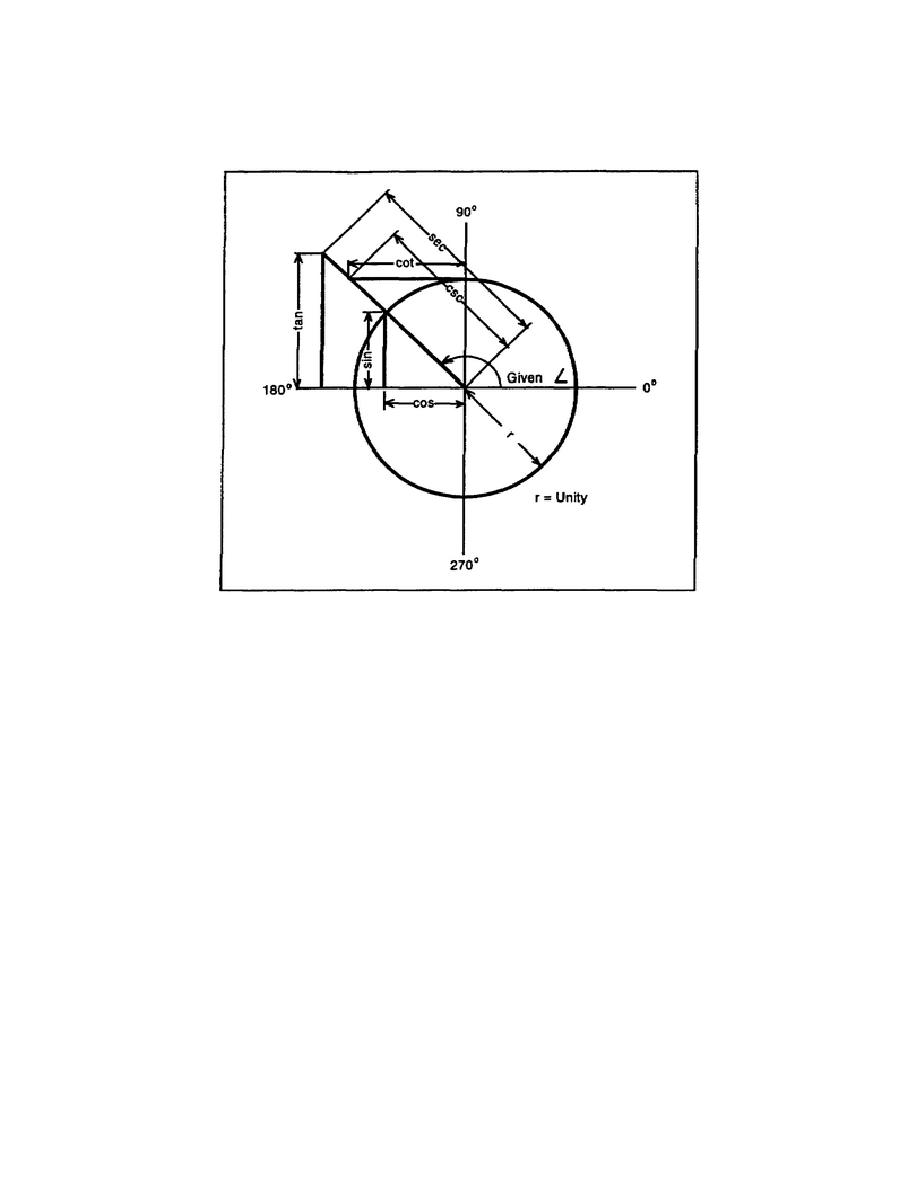
To each of the functions obtained for these acute angles, you must affix the proper sign as determined
from the size of the angle. Although there are numerous ways of numbering the quadrants of a circle,
there will be no change in the signs of the functions of each quadrant as shown in Table 4-2.
Figure 4-16. The unit circle
a. In previous paragraphs, you dealt with the solution of a special kind of triangle--the right
triangle. Since the majority of the angles turned by the surveyor in the field are not right angles, you
must know how to solve triangles that are not right triangles. In the following paragraphs, you will
review the laws and the methods governing the solution of triangles.
b. It is possible to solve any triangle in which three of its six parts are known, providing one
known part is a side. In a right triangle, the right angle is constant; so only a side and one other part
must be known to solve the triangle. However, in the oblique triangle, one side and two other parts must
be known before the triangle can be solved.
supply you with the information necessary for solving an oblique triangle. They are as follows:
One side and two angles.
Two sides and an opposite angle.
4-23
EN0591



 Previous Page
Previous Page
